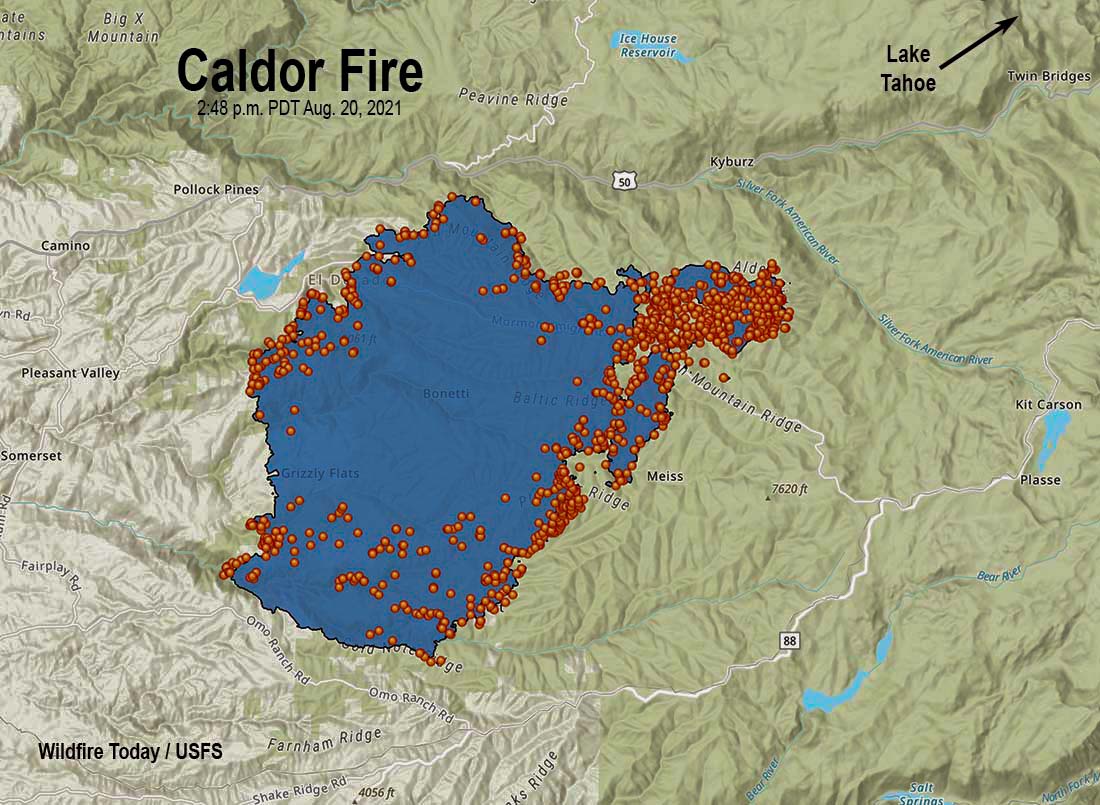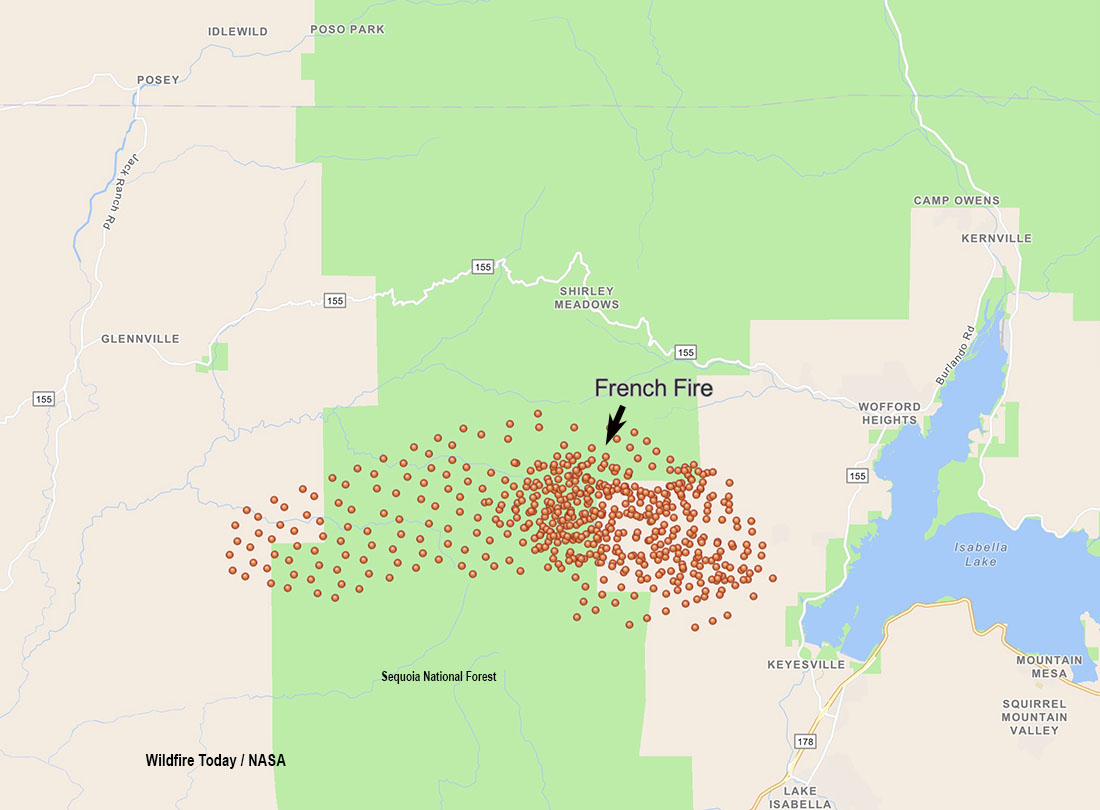
Over the last few days we ran across a number of examples of COVID outbreaks among wildland firefighters.
In an August 20 article, the Redding Record Searchlight, a Northern California newspaper, reported that CAL FIRE said there have been 14 positive cases at the Dixie Fire’s West Zone fire camp.
The positive cases include five from one crew, two from the same dozer, two from the same water tender and five “random cases,” the agency said. “These personnel were immediately released from the incident.”
Two of the cases led to hospitalizations, with one individual now in San Diego, who Cal Fire said is “doing well.” A second person, now in Redding, is “showing improvements,” the agency said.
The information below came from the Wildland Fire Lessons Learned Center.
In October of last year while working on the August Complex of fires, 9 of the 14 members of an Area Command Team that were working out of the Shasta-Trinity National Forest Supervisor’s Office in Redding tested positive. The first case was discovered after the team had been released and they were all in travel status followed by days off. That made it difficult to contact everyone. Some family members of individuals who tested positive also became infected. Given these unintended outcomes, a Facilitated Learning Analysis was initiated to develop lessons learned that could be shared with the wildland fire community.
The next four all occurred in California this year:
Four days after the crew began their season, one person tested positive. The crew Superintendent and Forest took immediate action to identify close contacts; 19 employees were identified. Of the 19, 7 were fully vaccinated (and returned to work immediately) and 12 were placed into quarantine (some at home and some in hotels).
On May 14th a fuels module member developed COVID-like symptoms; the person received a positive COVID test on May 16th. Contact tracing identified 10 close contacts (7 other fuels crew members and 3 additional employees who worked in the building). All of the close contacts were encouraged to get tested for COVID-19 and advised to quarantine (although 4 had been vaccinated, it was not used in the decision). One unvaccinated individual lived in barracks and moved to a hotel on the 16th. A second individual (the supervisor of the module) tested positive on May 17th.
Two additional cases were confirmed later that week (4 total in the cluster); none of the vaccinated employees tested positive or showed any symptoms. At the time of the review (June 2), one of the sick employees had returned to the office and others were teleworking. One of the four individuals was contacted by county public health, two were contacted by state public health, the fourth individual was never contacted by any public health department.
The four vaccinated employees did not get sick while four of the seven unvaccinated employees ultimately tested positive
An Interagency Hotshot Crew (IHC) finished a 14-day assignment with 18 crewmembers and arrived home June 22, 2021 (the IHC had 2 additional crewmembers who returned early and were not exposed); no employees were aware of exposure or had symptoms. The IHC was off duty on June 23-24, 2021 for mandatory rest.
On June 24th a crewmember developed a fever and took the initiative to get a COVID test immediately; the test returned a positive result the same day. Contact tracing found that the 17 other crewmembers were close contacts within 48-hours prior to the onset of symptoms. All of the close contacts were other IHC crewmembers (during travel home) and no other personnel were identified.
Of the 18 crewmembers who returned from assignment on June 22nd, 3 were fully vaccinated and returned to work on June 25th. The remaining employees (15) have not returned to work; the sick employee was put into isolation and the remaining close contacts on the crew were told to self-quarantine for 14-days by unit leaders. The 2 crewmembers who returned early (1 vaccinated) were not impacted.
None of the vaccinated employees got sick while 6 of the unvaccinated employees have tested positive.
On July 6, 2021, the local county public health contacted the Forest Service regarding an employee who had been exposed to a confirmed case of COVID-19. The employee had no symptoms and received negative test results (rapid test and PCR test). Public health advised the employee to quarantine for 10 days.
No other FS employees were involved in this exposure since they were considered a secondary contact because the employee was exposed outside of work.
The employee in quarantine impacted the availability of a fire engine during high fire danger, therefore an employee from a different station began working on the engine on July 6, 2021.
On July 7, 2021, the employee covering for the engine (from the other station) developed COVID-like symptoms and tested positive for COVID-19 on the same day.
This cluster involves 12 employees, with only 1 vaccinated and one who was in quarantine and not exposed. By July 12, 6 of the unvaccinated employees tested positive for COVID -19. All unvaccinated employees (10) were placed into quarantine. One employee chose to stay in a hotel and all others remained at their residences.
The vaccinated employee did not get sick while 6 of 11 unvaccinated employees have tested positive for COVID-19.
Lessons to be learned?
While the Delta variant, which began spreading widely in the United States in July, changed how easily it is to become infected even among those who are vaccinated, it is still true that a vaccination greatly reduces a person’s chance of severe infection, hospitalization, and death.
Here are the final paragraphs from an excellent, detailed article published August 18, 2021 at Healthline:
Vaccines are highly effective even if they’re not perfect
The COVID-19 vaccines were developed to stop developing severe forms of the disease that can lead to hospitalization and death. In that aspect, they have been extremely successful even if the vaccines are not 100 percent effective.
While it is true that some partially and fully vaccinated people have developed COVID-19, breakthrough infections should not be a concern for most of the population. Doctors, however, do still recommend people exercise caution in areas with low vaccination rates and high transmission.
Vaccines also greatly reduce the likelihood of mild and symptomatic infections as well as prevent death and hospitalization.
Kullar noted that the Delta variant is both more contagious and transmissible, and those who are harboring the Delta variant can carry as much as a 1,200 times higher viral load than the original strain.
“Given all of this information, it is important for everyone not only to get fully vaccinated but also follow infection prevention measures, such as wearing a face mask in the public, physically distancing from others, and avoiding large crowds until we round the turn of this surge.”
















